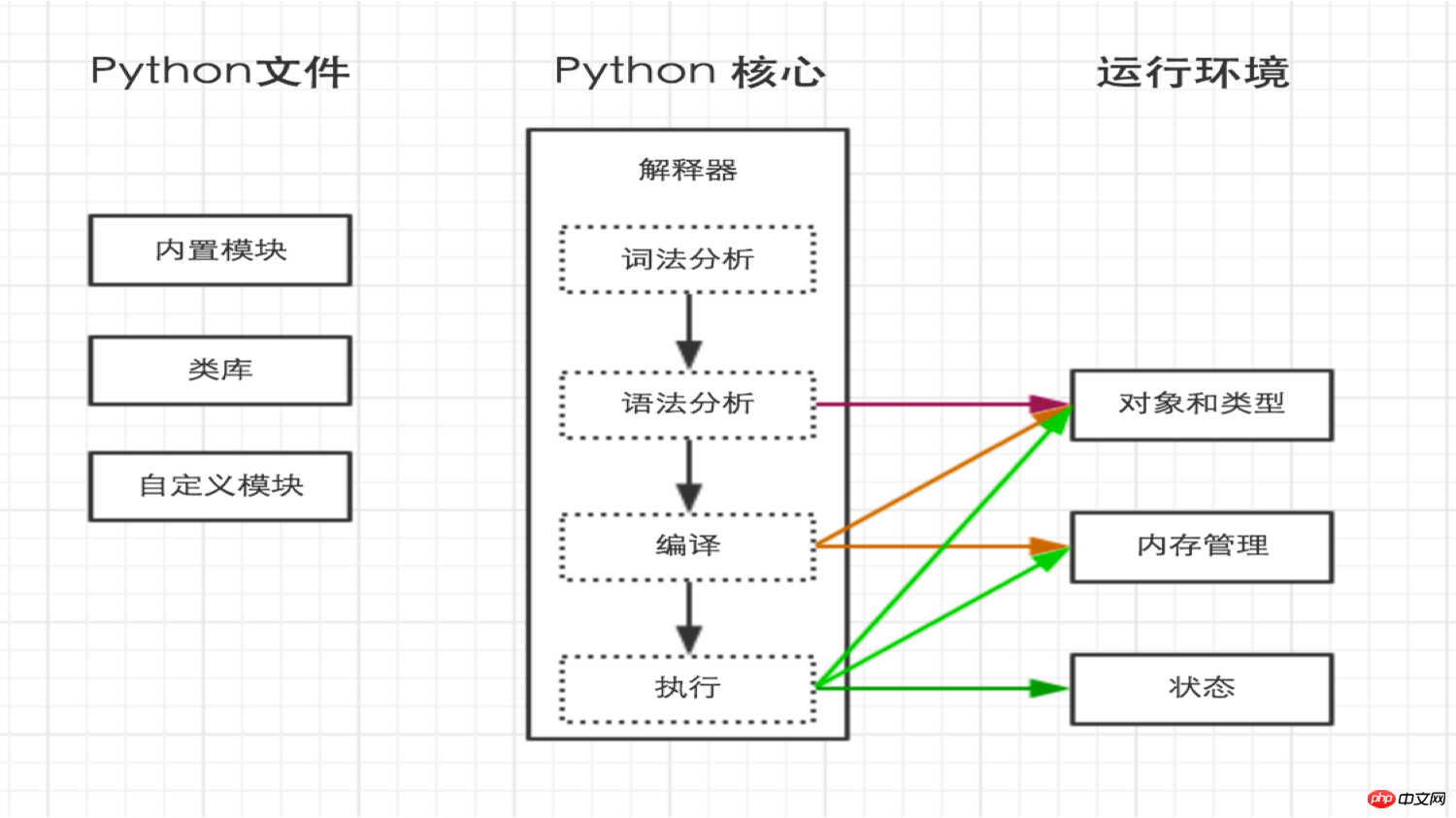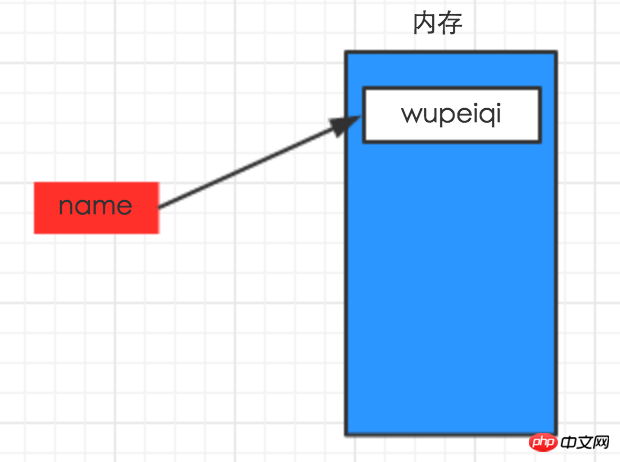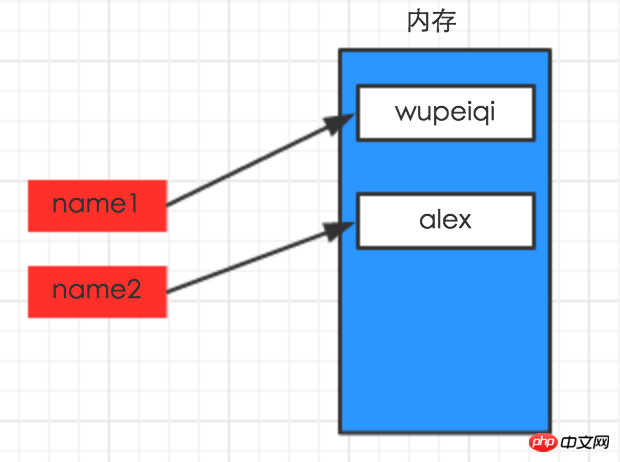Introduction to python installation and usage
Python installation
#1、下载安装包
https://www.python.org/downloads/
2、安装
默认安装路径:C:\python273、配置环境变量
【右键计算机】--》【属性】--》【高级系统设置】--》【高级】--》【环境变量】--》【在第二个内容框中找到 变量名为Path 的一行,双击】 --> 【Python安装目录追加到变值值中,用 ; 分割】
如:原来的值;C:\python27,切记前面有分号
Copy after login
linux, Mac :
1、下载安装包 https://www.python.org/downloads/ 2、安装 默认安装路径:C:\python273、配置环境变量 【右键计算机】--》【属性】--》【高级系统设置】--》【高级】--》【环境变量】--》【在第二个内容框中找到 变量名为Path 的一行,双击】 --> 【Python安装目录追加到变值值中,用 ; 分割】 如:原来的值;C:\python27,切记前面有分号
1 无需安装,原装Python环境2 3 ps:如果自带2.6,请更新至2.7
Update python:
1 windows: 2 3 1、卸载重装即可 4 5 linux: 6 7 Linux的yum依赖自带Python,为防止错误,此处更新其实就是再安装一个Python 8 9 查看默认Python版本10 python -V11 12 1、安装gcc,用于编译Python源码13 yum install gcc14 2、下载源码包,15 3、解压并进入源码文件16 4、编译安装17 ./configure18 make all19 make install20 5、查看版本21 /usr/local/bin/python2.7 -V22 6、修改默认Python版本23 mv /usr/bin/python /usr/bin/python2.624 ln -s /usr/local/bin/python2.7 /usr/bin/python25 7、防止yum执行异常,修改yum使用的Python版本26 vi /usr/bin/yum27 将头部 #!/usr/bin/python 修改为 #!/usr/bin/python2.6

 Getting started with python
Getting started with python
1 print("hello,world")Execute the hello.py file, that is: python /home/dev/hello.py
The internal execution process of python is as follows:
2. Interpreter:
 When executing python /home/dev/hello.py in the previous step, it was clearly stated that the hello.py script is executed by the python interpreter.
When executing python /home/dev/hello.py in the previous step, it was clearly stated that the hello.py script is executed by the python interpreter.
If you want to execute a python script similar to executing a shell script, for example:
./hello.py, then you need to specify the interpreter at the head of the hello.py file, as follows: 1 #!/usr/bin/env python2 3 print("hello,world")Copy after login
In this case, execute: ./hello.py
. ps: Hello.py needs to be given execution permission before execution, chmod 755 hello.py1 #!/usr/bin/env python2 3 print("hello,world")
When the python interpreter loads the code in the .py file, it will encode the content (default ascill)
Obviously ASCII code cannot convert all kinds of text in the world and symbols are all represented, so a new encoding that can represent all characters and symbols is needed, namely: Unicode
Unicode (Unicode, Universal Code, Single Code) is a code used on computers Character Encoding. Unicode was created to solve the limitations of traditional character encoding schemes. It sets a unified and unique binary encoding for each character in each language, stipulating that all characters and symbols must be represented by at least 16 bits (2 bytes), that is: 2 **16 = 65536,  Note: What is mentioned here is at least 2 bytes, possibly more
Note: What is mentioned here is at least 2 bytes, possibly more
UTF-8, which is the compression of Unicode encoding And optimization, he no longer uses at least 2 bytes, but classifies all characters and symbols: the content in the ascii code is saved in 1 byte, European characters are saved in 2 bytes, and East Asian characters Save with 3 bytes...
So, when the python interpreter loads the code in the .py file, it will encode the content (default ascill)
4. Comment:
5. pyc file:
When executing Python code, if other .py files are imported, a .pyc with the same name will be automatically generated during execution. file, which is the bytecode generated after compilation by the Python interpreter. ps: The code can be compiled to produce bytecode; the bytecode can also be decompiled to obtain the code.6. Variables:
1. Declare variables
1 #!/usr/bin/env python2 # -*- coding: utf-8 -*-3 4 name = "wupeiqi"
上述代码声明了一个变量,变量名为: name,变量name的值为:"wupeiqi"
变量的作用:昵称,其代指内存里某个地址中保存的内容

变量定义的规则:
变量名只能是 字母、数字或下划线的任意组合
变量名的第一个字符不能是数字
以下关键字不能声明为变量名
['and', 'as', 'assert', 'break', 'class', 'continue', 'def', 'del', 'elif', 'else', 'except', 'exec', 'finally', 'for', 'from', 'global', 'if', 'import', 'in', 'is', 'lambda', 'not', 'or', 'pass', 'print', 'raise', 'return', 'try', 'while', 'with', 'yield']
2、变量的赋值:
1 #!/usr/bin/env python2 # -*- coding: utf-8 -*-3 4 name1 = "wupeiqi"5 name2 = "alex"

The above is the detailed content of Introduction to python installation and usage. For more information, please follow other related articles on the PHP Chinese website!

Hot AI Tools

Undresser.AI Undress
AI-powered app for creating realistic nude photos

AI Clothes Remover
Online AI tool for removing clothes from photos.

Undress AI Tool
Undress images for free

Clothoff.io
AI clothes remover

AI Hentai Generator
Generate AI Hentai for free.

Hot Article

Hot Tools

Notepad++7.3.1
Easy-to-use and free code editor

SublimeText3 Chinese version
Chinese version, very easy to use

Zend Studio 13.0.1
Powerful PHP integrated development environment

Dreamweaver CS6
Visual web development tools

SublimeText3 Mac version
God-level code editing software (SublimeText3)

Hot Topics
 1382
1382
 52
52
 PHP and Python: Code Examples and Comparison
Apr 15, 2025 am 12:07 AM
PHP and Python: Code Examples and Comparison
Apr 15, 2025 am 12:07 AM
PHP and Python have their own advantages and disadvantages, and the choice depends on project needs and personal preferences. 1.PHP is suitable for rapid development and maintenance of large-scale web applications. 2. Python dominates the field of data science and machine learning.
 How is the GPU support for PyTorch on CentOS
Apr 14, 2025 pm 06:48 PM
How is the GPU support for PyTorch on CentOS
Apr 14, 2025 pm 06:48 PM
Enable PyTorch GPU acceleration on CentOS system requires the installation of CUDA, cuDNN and GPU versions of PyTorch. The following steps will guide you through the process: CUDA and cuDNN installation determine CUDA version compatibility: Use the nvidia-smi command to view the CUDA version supported by your NVIDIA graphics card. For example, your MX450 graphics card may support CUDA11.1 or higher. Download and install CUDAToolkit: Visit the official website of NVIDIACUDAToolkit and download and install the corresponding version according to the highest CUDA version supported by your graphics card. Install cuDNN library:
 Detailed explanation of docker principle
Apr 14, 2025 pm 11:57 PM
Detailed explanation of docker principle
Apr 14, 2025 pm 11:57 PM
Docker uses Linux kernel features to provide an efficient and isolated application running environment. Its working principle is as follows: 1. The mirror is used as a read-only template, which contains everything you need to run the application; 2. The Union File System (UnionFS) stacks multiple file systems, only storing the differences, saving space and speeding up; 3. The daemon manages the mirrors and containers, and the client uses them for interaction; 4. Namespaces and cgroups implement container isolation and resource limitations; 5. Multiple network modes support container interconnection. Only by understanding these core concepts can you better utilize Docker.
 Python vs. JavaScript: Community, Libraries, and Resources
Apr 15, 2025 am 12:16 AM
Python vs. JavaScript: Community, Libraries, and Resources
Apr 15, 2025 am 12:16 AM
Python and JavaScript have their own advantages and disadvantages in terms of community, libraries and resources. 1) The Python community is friendly and suitable for beginners, but the front-end development resources are not as rich as JavaScript. 2) Python is powerful in data science and machine learning libraries, while JavaScript is better in front-end development libraries and frameworks. 3) Both have rich learning resources, but Python is suitable for starting with official documents, while JavaScript is better with MDNWebDocs. The choice should be based on project needs and personal interests.
 MiniOpen Centos compatibility
Apr 14, 2025 pm 05:45 PM
MiniOpen Centos compatibility
Apr 14, 2025 pm 05:45 PM
MinIO Object Storage: High-performance deployment under CentOS system MinIO is a high-performance, distributed object storage system developed based on the Go language, compatible with AmazonS3. It supports a variety of client languages, including Java, Python, JavaScript, and Go. This article will briefly introduce the installation and compatibility of MinIO on CentOS systems. CentOS version compatibility MinIO has been verified on multiple CentOS versions, including but not limited to: CentOS7.9: Provides a complete installation guide covering cluster configuration, environment preparation, configuration file settings, disk partitioning, and MinI
 How to operate distributed training of PyTorch on CentOS
Apr 14, 2025 pm 06:36 PM
How to operate distributed training of PyTorch on CentOS
Apr 14, 2025 pm 06:36 PM
PyTorch distributed training on CentOS system requires the following steps: PyTorch installation: The premise is that Python and pip are installed in CentOS system. Depending on your CUDA version, get the appropriate installation command from the PyTorch official website. For CPU-only training, you can use the following command: pipinstalltorchtorchvisiontorchaudio If you need GPU support, make sure that the corresponding version of CUDA and cuDNN are installed and use the corresponding PyTorch version for installation. Distributed environment configuration: Distributed training usually requires multiple machines or single-machine multiple GPUs. Place
 How to choose the PyTorch version on CentOS
Apr 14, 2025 pm 06:51 PM
How to choose the PyTorch version on CentOS
Apr 14, 2025 pm 06:51 PM
When installing PyTorch on CentOS system, you need to carefully select the appropriate version and consider the following key factors: 1. System environment compatibility: Operating system: It is recommended to use CentOS7 or higher. CUDA and cuDNN:PyTorch version and CUDA version are closely related. For example, PyTorch1.9.0 requires CUDA11.1, while PyTorch2.0.1 requires CUDA11.3. The cuDNN version must also match the CUDA version. Before selecting the PyTorch version, be sure to confirm that compatible CUDA and cuDNN versions have been installed. Python version: PyTorch official branch
 How to install nginx in centos
Apr 14, 2025 pm 08:06 PM
How to install nginx in centos
Apr 14, 2025 pm 08:06 PM
CentOS Installing Nginx requires following the following steps: Installing dependencies such as development tools, pcre-devel, and openssl-devel. Download the Nginx source code package, unzip it and compile and install it, and specify the installation path as /usr/local/nginx. Create Nginx users and user groups and set permissions. Modify the configuration file nginx.conf, and configure the listening port and domain name/IP address. Start the Nginx service. Common errors need to be paid attention to, such as dependency issues, port conflicts, and configuration file errors. Performance optimization needs to be adjusted according to the specific situation, such as turning on cache and adjusting the number of worker processes.




